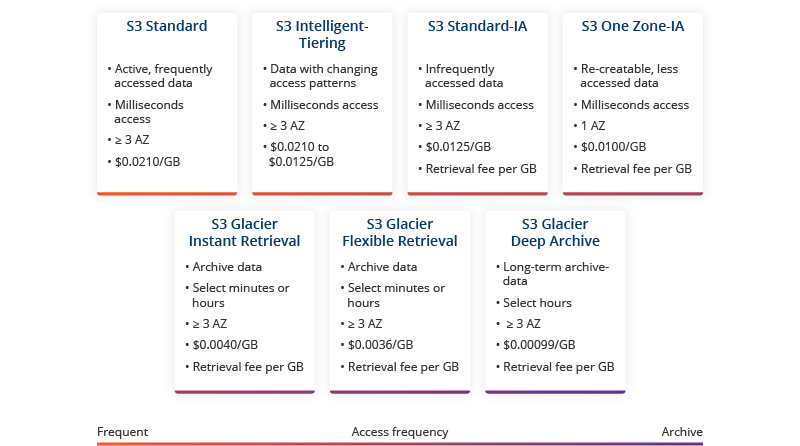AWS Pricing and Billing Services for Cloud and DevOps Engineers
Learning path for the AWS Cloud Practitioner exam
Table of contents
📝Introduction
This post will cover the main principles of AWS Pricing and Billing Services.
📝AWS Pricing
Pay only for the individual services you need, for as long as you use them, and without requiring long-term contracts or complex licensing.
Only pay for the services you consume, and once you stop using them, there are no additional costs or termination fees.
Types of Pay:
Pay-as-you-go -> It allows you to easily adapt to changing business needs without overcommitting budgets and improving your responsiveness to changes.
Save when you commit -> For example, using AWS Compute and AWS Machine Learning, Savings Plans offer savings over On-Demand in exchange for a commitment to use a specific amount (measured in $/hour) of an AWS service or a category of services, for a one- or three-year period.
Pay less by using more -> For example, with AWS, you can get volume-based discounts and realize important savings as your usage increases. For services such as S3, pricing is tiered, meaning the more you use, the less you pay per GB.
There are 3 AWS Free offer types:
12 months free (AWS EC2*, S3*, RDS*, EBS*, etc)
Always free (AWS Lambda*, SNS*, CloudFront*, etc)
Trials (AWS RedShift*, LightSail*, SageMaker*, etc)
*Note - There are some types of limits of use, kindly check on this link.
EC AWS Pricing:
On-Demand Instances (Pay by the hour or second)
Spot Instances (Utilize spare computing capacity)
Saving Plans (Low price for consistent usage)
Reservations (Reserving capacity ahead of time)
![AWS Pricing in 2020: Overview, Principles and Examples [EC2, S3, Lambda] - R&D Solutions](https://rnd-solutions.net/wp-content/uploads/2020/01/RD_AWS_Price_Models_1200x628.png)
AWS Lambda Pricing:
Number of requests (Test invokes from the console count)
Code Execution Time (From execution start in response to events to stop)
Always free ( 1 million requests per month)

AWS S3 Pricing:
Storage Class (Various storage classes)
Data Transfer (Data Transferred out of S3 region)
Storage (Number and size of objects)
Request and Data retrieval (Requests made for data and amount of requests)

AWS RDS Pricing:
Running clock hours
Type of Database
Storage
Purchase type
Database count
API requests
Data Transfer
Deployment type

AWS Total Cost of Ownership(TCO) -> It is a comparative total cost of ownership analysis (acquisition and operating costs) for running an infrastructure environment end-to-end on-premises or in a co-location facility versus AWS. In simple words, it is a financial estimate that helps you understand both the direct and indirect costs of AWS.

AWS TCO Methodology:

AWS Application Discovery Service -> It helps to plan cloud migration projects by gathering information about your on-premises data centres.
Discover on-premises server inventory and behaviour to plan cloud migrations
Identify server dependencies
Measure server performance
Data Exploration in Amazon Athena
Integrate discovery data to other AWS services such as AWS Migration Hub and AWS DMS Fleet Advisor

AWS Pricing Calculator -> It is a tool to provide a cost estimate that fits your unique business or personal needs with AWS products and services.
Explore services based on your use cases
Find instance types that fit your needs
Transparent pricing
Share your estimates
Hierarchical estimates
Estimate exports

📝AWS Billing
AWS Billing -> It provides a monthly view of your chargeable costs and uses some proper tools for that.
Easy Data Access
Reconcile invoices to detailed billing data
Consolidated Billing
Display the most recent estimated charges based on services metered to date
Invoices are generated when a monthly billing period closes, or when subscriptions or one-time purchases are made
For users of AWS Organizations, users logged into the management account can view consolidated charges for all member accounts, with account-level detail available on the “Charges by account” tab
Provides details of AWS-provided services as well as purchases made through the AWS Marketplace
For users of AWS Billing Conductor, AWS Bills provides pro forma data to member accounts and the primary accounts of a billing group; management accounts can toggle between chargeable and pro forma data views
AWS Billing tools:
AWS Budgets -> It improves planning and cost control with flexible budgeting and forecasting.
Track costs, usage, and coverage with custom budgets
Stay informed on forecasted spending and resource use
Create custom actions to prevent overages, inefficient resource use, or lack of coverage
Budget Alerts are received from email or SNS notifications if you exceed your threshold
Budgets in the Real World Scenarios:
Create scheduled reports. Stay informed on how actual or forecasted costs and usage progress toward your budget threshold.

AWS Cost and Usage Reports(CUR) -> It to review, itemize, and organize the most comprehensive cost and usage data for your account.
Dive deeper into your AWS cost and usage data
Detailed and comprehensive reports
Understand cost drivers at the resource level and identify cost optimization opportunities
Grouped by cost service category and cost allocation tags
CUR in the Real World Scenarios:
Understand cost anomalies. Analyze your costs in greater detail when your bill is higher or lower than expected.

AWS Cost Explorer -> It is an easy-to-use interface that lets you visualize, understand, and manage your AWS costs and usage over time.
Get started quickly by creating custom reports that analyze cost and usage data
Analyze your data at a high level or dive deeper into your cost and usage data to identify trends, pinpoint cost drivers, and detect anomalies
View the past 13 months
Forecast for up to 3 months
Cost Explorer in the Real World Scenarios:
Forecast your costs. Create a forecast by selecting a future time range for your report. You can use a forecast to estimate your AWS bill and set alarms and budgets based on predictions.

Thank you for reading. I hope you were able to understand and learn something helpful from my blog.
Please follow me on Hashnode and on LinkedIn franciscojblsouza

